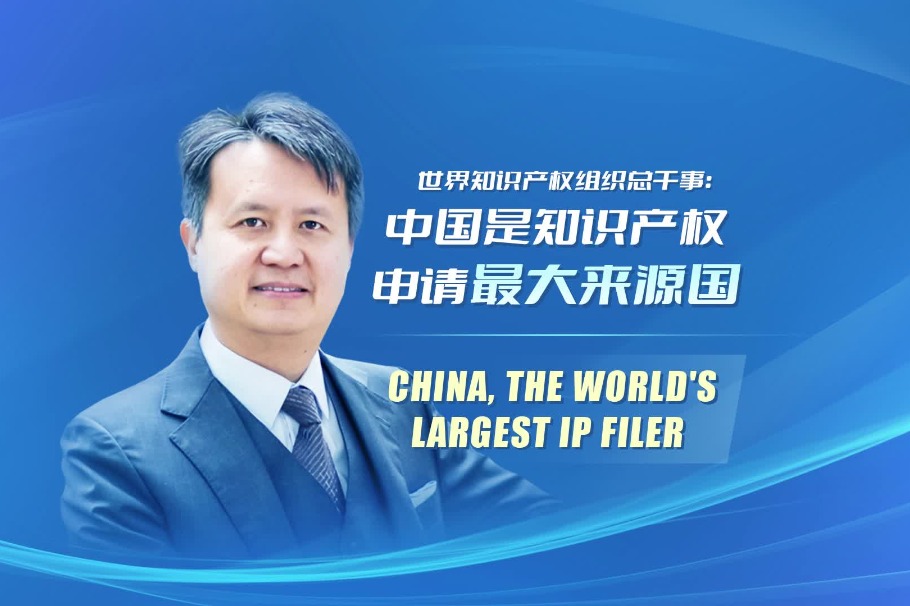Report: Over 30% Current Patents Commercialized in China

Commercialization rate of China's valid invention patents reached 34.7 percent in 2020. The yearly rates throughout the entire 13th Five-Year Plan (2016-2020) sit firmly above 30 percent while the rates of companies are even higher at above 40 percent, according to the 2020 China Patent Investigation Report issued by China National Intellectual Property Administration (CNIPA). The report takes a close look at patenting activities of Chinese innovators from the perspectives of IP creation, use and protection.
The report investigated 24 provinces (autonomous regions, municipalities),15,000 patentees and 42,000 patents as 82.2 percent questionnaires were actually filled in. Three key points are shaped: patent transfer and commercialization advances on steady paces; heightened patent protection constantly improves the climate for doing business; patentees themselves tend to invest more in R&D and join hands in innovation.
The level of patent transfer and transformation in China records a year-on-year steady increase. In a bid to reflect the vitality of patent transfer and transformation more comprehensively, the Report not only focuses on the commercialization rate of valid invention patents, but also introduces the Patent Transfer and Transformation Index (PTI). The PTI, using 50 as a threshold,refers to a weighted sum of standardized sub-index data including patent industrialization rate, licensing rate, transfer rate, export amount of IP royalties, and amount of financing through patent pledging. When higher than 50, it reflects the vitality of patent transfer and transformation activities; when lower than 50, it suggests contraction of patent transfer and conversion activities. "China's PTI reaches 54.7 in 2020, up 3.6 points from 2019," Ge Shu, Director General of CNIPA's Strategy and Planning Department, said that this figure means patent transfer and transformation activities are gaining momentum.
Will it be possible to maintain this dynamic trend in the future? Nearly 80 percent of companies have clear expectations for the future revenue generated by their patents, 49.5 percent of which expect that their revenue derived from materializing their patents will increase in the next year; 45.5 percent expect such revenue to stay flat, and only the remaining 5.0 percent foresees a decline, suggesting most Chinese corporate patentees see their patent-generating revenue going nowhere but upward.
In regard to patent protection, the Report illustrates China's enhancement in patent protection helps build a more healthier environment. On the one hand, the proportion of Chinese patentees experiencing infringements is dropping, down 3.7 percent from 2015 to 10.8 percent in 2020. On the other hand, patentees have a more prepared mind to enforce their rights. In addition, 73.9 percent of Chinese corporate patentees took measures to protect their rights after being infringed, up 11.1 percent from 2015, clearly sending a message that right owners are more proactive in defending their belongings.
A healthier IP protection environment with less infringements and more aggressive right protection benefits from the mounting cost of infraction with the law. The Report shows that during the 13th Five-Year period, 7.3% of patent infringement court cases ended up with over 1 million yuan in damages, whether from court order, mediation or settlement, 4.4 percent higher than that during the 12th Five-Year period (2011-2015).
The Report also illustrates two new changes in innovation activities: patentees themselves tend to invest more in R&D and join hands in innovation.
In 2020, 16.5 percent of China's valid invention patents received R&D investments of more than 1 million yuan, up 4.4 percent year-on-year while 43.4 percent of valid invention patents received R&D investments below 100,000 yuan, down 1.2 percent, obviously suggesting companies are more generous in infusing more capital to R&D.
Nearly 80 percent of Chinese corporate patentees had worked with others in innovation; 52.1 percent of corporate patentees had worked with their upstream or downstream customers on innovative projects; 34.9% with companies in the same industry; 27.5 percent with universities or research institutes, whose most frequent patrons were national-level high-tech companies, reaching 40.5 percent, 1.9 times more likely than that of non-high-tech enterprises. Cooperation has become a significant option of companies' innovation.
Centering on patent transfer and transformation, patent protection, and social responses to innovation trends, the Report emphasizes on how to further play the role of patent system in stimulating innovation and employ accurate means to help innovative enterprises achieve benefits, which is also one of the focuses of promoting IPR's high-quality development. "CNIPA will further conduct annual patent surveys with focus on patent transfer and transformation, patent commercialization rate and the output of high-value patents in key technical fields, which helps to provide support for the formulation of China's IPR development policies during the 14th Five-Year period (2021-2025) via solid statistical survey data," Ge said.




